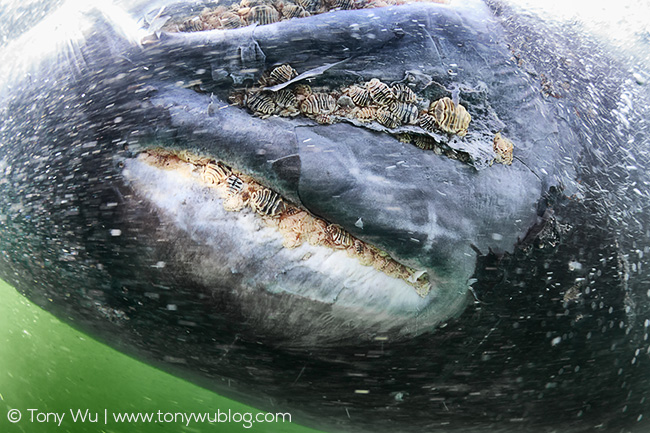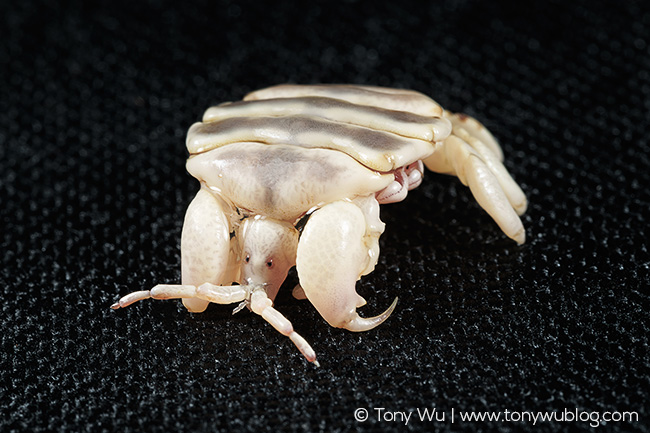A quick addendum to my previous post about gray whales.
In case you didn’t know it, many (all?) whales carry communities of other living organisms. Gray whales (Eschrichtius robustus), for instance, host Cyamus scammoni, a species of whale lice.
Here are some of the critters clinging to the blowhole area of a gray whale calf:

In the category of “facts that you didn’t know you really should know but that you’d likely decide that you might not want to know once you knew”—whale lice are amphipods that scavenge for food on the whale’s body, including the whale’s skin and flesh. Eeeew.
(Don’t pretend that you don’t know that you also have lots of creepy-crawlies living on and in you using you as a portable buffet.)
Whale lice have hook-like appendanges, which are pretty good at grasping onto whale skin, but looking at the photo above, you might wonder how the heck they can hold on with water swishing by at high speed all the time.
I don’t know the answer, but I think it has something to do with the parasites' collective behaviour. While hooks of a given individual can certainly latch on to a whale, whale lice interlock their hooks as well, making for long, clumpy concantenations of creepy crustaceans.
I’m speculating as I sit in the airport in between planes, but I think that lots of interlinked whale lice would result in a high density of hooks per unit area dug into their host, resulting in exceptionally effective group-grip, so to speak. This might explain why whale lice tend to cluster together.
Think of it as a carpet of parasitic velcro. “Mmmmm, yummy” (rendered in the contemplative voice of philosopher Homer Simpson).
You can, in theory, tell the males and females apart, because there is sexual dimorphism among adults (fancypants way of saying that males are larger than females). Also of interest, juvenile whale lice mature in a pouch-like structure called the marsupium, which is located on the underside of females. Most (all?) other crustaceans have a planktonic larval stage.
Here’s a close-up view of one of the whale lice. You can see the hooked appendages.

Photographic note: Given how many different brands of photo equipment I use, it’s not always easy to have all the right bits and pieces in the right place at the right time, especially when I’m traveling, which is like, always.
The photo above involved: Sony a7rII camera body + Metabones Canon lens adapter + Canon 100mm f2.8 IS macro lens (borrowed from Nana) + Yongnuo 622N wireless flash triggers + Nikon SB–910 flashes.
It took a bit of fiddling and mumbling to myself to get the five brands to cooperate, but it eventually all came together at the kitchen counter while we were preparing dinner.
I'm sorta' kinda' sure none of the whale lice ended up as garnish.